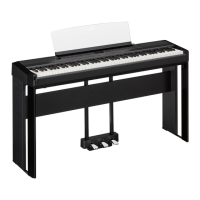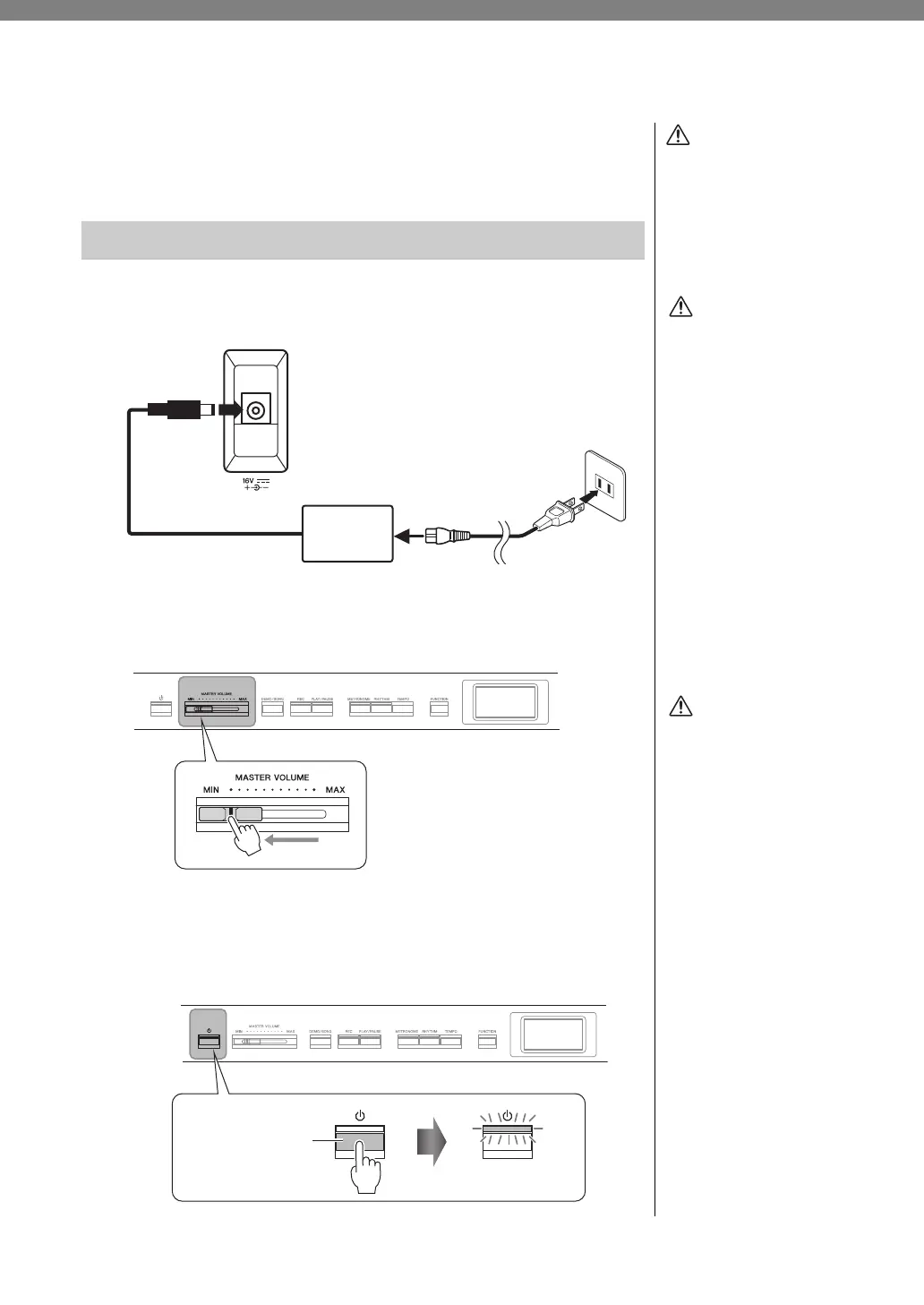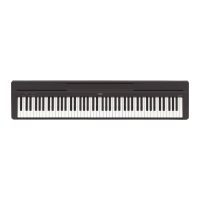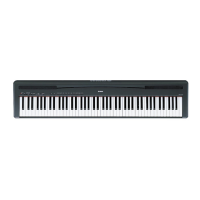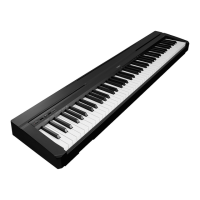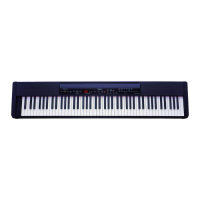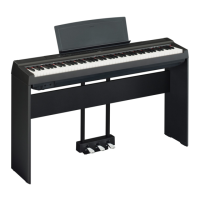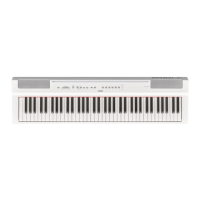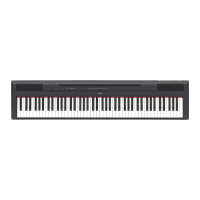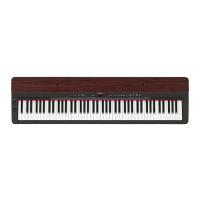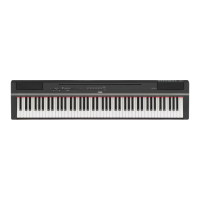14
P-515 Owner’s Manual
Getting Started — Playing the Keyboard
This section explains how to set up and start using your instrument. Setup is so
simple, you can start playing right away.
1. Connect the power cord and AC adaptor.
Connect the plugs of the AC adaptor in the order shown in the illustration.
2. Turn down the [MASTER VOLUME] slider at the right
end of the front panel to “MIN.”
3. Press the [P] (Standby/On) switch to turn the power on.
The [P] (Standby/On) switch lights up and the Voice display appears on the
display at the center of the front panel.
Turning the Power On or Off
• Use only the AC power cord
supplied with your
instrument. If the supplied
cord is lost or damaged and
needs to be replaced,
contact your Yamaha
dealer. The use of an
inappropriate replacement
can pose a fire and shock
hazard!
• The type of AC power cord
provided with your
instrument may be different
depending on the country
in which it is purchased. (In
some areas a plug adaptor
may be provided to match
the pin configuration of the
AC wall outlets in your
area.) Do NOT modify the
plug provided with your
instrument. If the plug does
not fit the outlet, have a
proper outlet installed by a
qualified electrician.
Use the specified adaptor
(page 115) only. The use of
other adaptors may result in
irreparable damage to both
the adaptor and the
instrument.
When disconnecting the power
cord/AC adaptor, first turn off
the power, then follow this
procedure in reverse order.
AC
adaptor
AC outlet
DC IN jack
(page 13)
Power cord
DC plug
AC plug
1-1
1-2
1-3
• Press only the [P] (Standby/
On) switch when turning the
power on. Any other
operations, such as pressing
the keys, buttons or pedals
may cause the instrument to
malfunction.
•Turning the power off while
recording or editing might
cause data loss. If you need
to force-quit the instrument,
hold down the [P] (Standby/
On) switch for longer than
three seconds. Note that the
force-quit operation might
cause loss of the Paring
information for Bluetooth
audio function.
[P] (Standby/On)
switch
The power
indicator lights up.
When setting up the product,
make sure that the AC outlet
you are using is easily
accessible. If some trouble or
malfunction occurs,
immediately turn off the
power switch and disconnect
the plug from the outlet.
